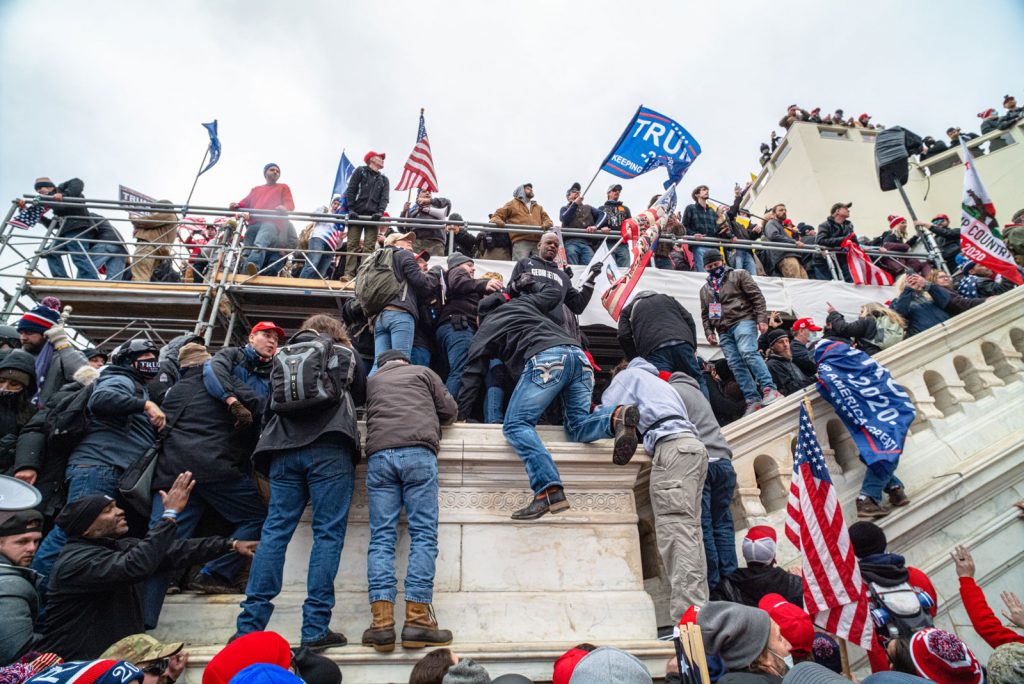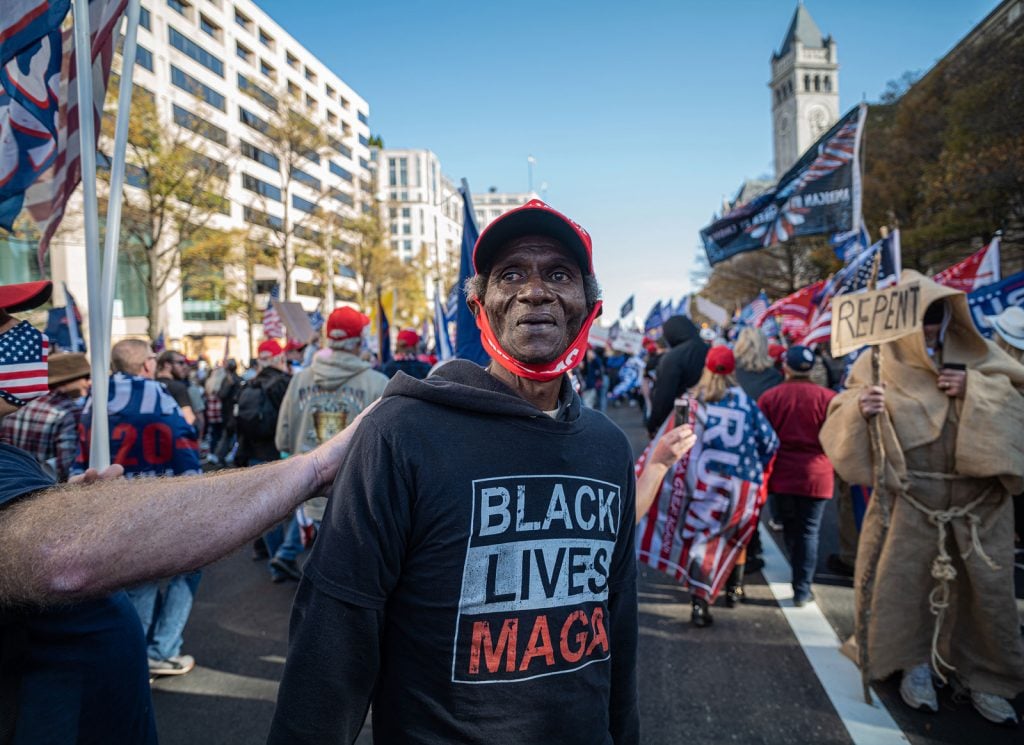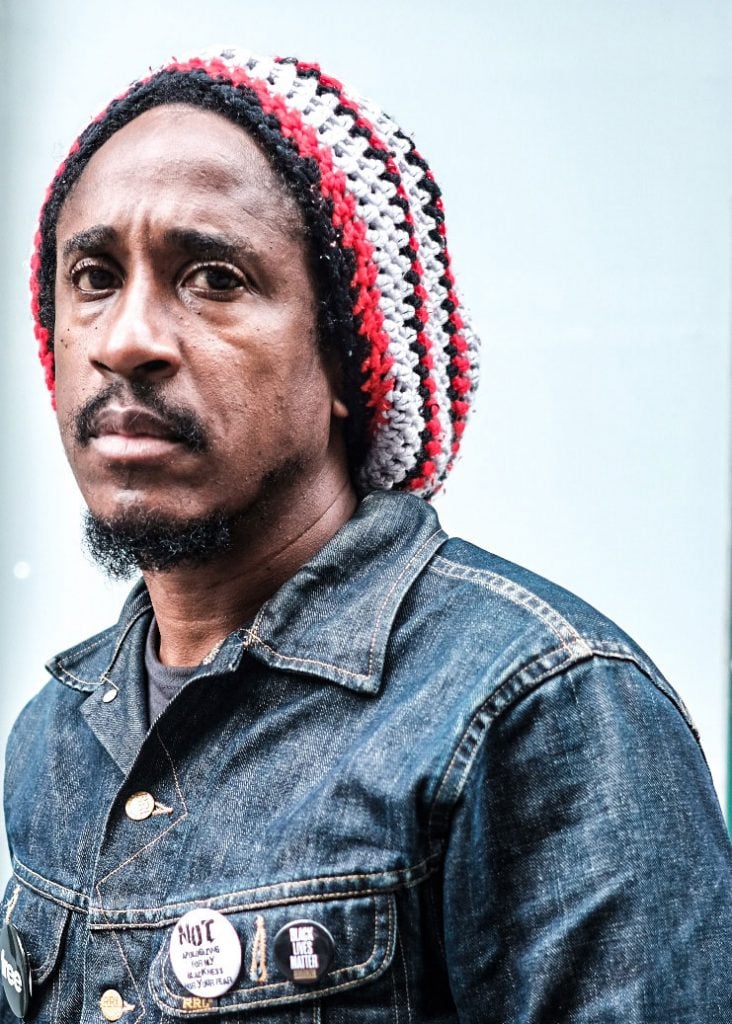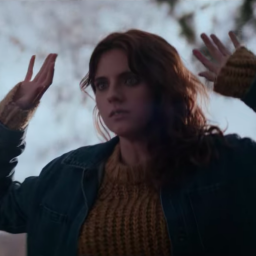Donald Trump’s unlikely ascent to the Oval Office spawned countless think pieces aimed at demystifying the so-called Trump Voter, be that a Midwestern neo-Nazi, a suburban white woman, a Latino man, or a gay former liberal.
And even through Trump himself has left office, Trumpism is here to stay. That’s why photographer Ruddy Roye decided to document Trump supporters at rallies during the final stretch of his term. Selections from the series will be published today, accompanying an article in the New York Review of Books.
“As a friend of mine, the writer Rebecca Lee Sanchez, says in the article, the violence of revolution and revolt is violence, but it stems from grievances nonetheless,” says Roye, who previously trained his lens on former Black miners of Kentucky largely forgotten in national conversations about coal country. “If we recognize the grievances that cause the revolution, maybe we can find the solutions.”
Even the momentous events of January 6 weren’t enough to shake Roye’s faith in the value of listening. (Roye did not make it past the mob into the Capitol, but he captured the mob outside.)

Trump supporters storming the Capitol, Washington, D.C., January 6, 2021. Photo: Ruddy Roye
Asked whether the Trump supporters at these rallies disdained him as a representative of the media (and a Black immigrant, no less), Roye brushed off the question, saying Trump’s supporters may come by the feeling honestly, “because the media does not care about their needs.”
“They are losing their coal mining jobs,” he says. “They’re losing their factory jobs. They were promised all these things and they’re not seeing it, because they think the Democrats are holding up their future in Congress.”
It’s a rare sentiment at a moment when, according to a recent survey, up to 20 percent of Americans polled sometimes think that the US would be better off if large numbers of the other party “just died.” (Guilty as charged.)
Roye undertook the project with the support of the Eyebeam Center for the Future of Journalism, established in 2018 with funds from Craigslist founder Craig Newmark (whose free classified ads dealt a blow to newspapers everywhere) in an effort to bring creative people into the process of reporting and analyzing the news. Recent ECFJ-supported projects include a Buzzfeed article on Chinese detention camps co-authored by architect Allison Killing and an Atlantic article about who is (and is not) editing Wikipedia by artist Michael Mandiberg.
“ECFJ came out of the shock of the 2016 election,” says editorial director Marisa Mazria Katz, describing Roye’s project as perfectly aligned with the organization’s ethos. “We were keen that we would focus on every election we can.”
Roye saw a parallel between the day Democrats lost in 2016 and the day the 2020 election was called for Biden. “When any group feels they’re disenfranchised or have lost something they really wanted,” he says, “for me, the people look the same.”
Roye’s work has been published by Time and National Geographic, and he boasts some 282,000 Instagram followers. He is also a frequent flyer with the New York Review of Books. “When he tells me there’s something he’s interested in pursuing, I trust him to follow that instinct,” says Lucy McKeon, the associate editor who green-lit Roye’s pitch.

Trump supporters at the Million MAGA March, Washington, D.C., November 14, 2020. Photo: Ruddy Roye.
McKeon was confident that the photographer could “show us something new,” she said, about a subject that’s been thoroughly explored.
“Ruddy has a unique eye—you can see that in the choices he makes regarding who and what to photograph, in his technical choices, his composition—but also, as importantly, he has a unique ability to engage with his subjects,” she says. “The photographer Roy DeCarava said he felt that he was present in each of his photographs, that he was sharing his inner experience. I think with Ruddy’s work you really get a sense in his images of the interaction between him and the person he’s picturing—the collaboration.” Her words seemed to anticipate one of the keynotes of Biden’s inaugural address, his call for unity.
As for Roye, he feels that the very language about victors and the vanquished that is built into politics is part of the problem.
“I’ve always been haunted by this idea of somebody losing and somebody winning,” he says. “There’s always boasting and bragging. There’s no empathy or compassion. That does not create healing.”
And while many have questioned the ethics of portrayals that might soften the danger posed by Trump’s most ardent supporters, or felt the unity language put forth by Biden is a bit naive, Roye is confident in his approach.
“If you’re willing to have a conversation with me about your plight,” he notes, “then I have to listen.”









